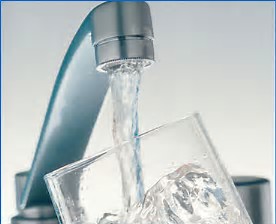|
Water in the U.S. - The Source Of? By Pierre Mouchette | Real Property Experts LLC All chemicals generated by human activity will eventually find their way into the water supply. The types and quantities of carcinogens present in water at consumption will differ depending on the water source, treatment processes, and the distribution network.
Source Water Contaminants These contaminants include arsenic, asbestos, radon, agricultural chemicals, and hazardous waste. Of these, the most substantial evidence for cancer risk involves arsenic, which is linked to cancers of the liver, lung, bladder, and kidney. Water Treatment Using chlorine to treat water helps to reduce the risk of infectious disease but may account for a substantial portion of the cancer risk associated with drinking water. The by-products of chlorination are associated with an increased risk of bladder and rectal cancer. Fluoridation of water has received a lot of scrutiny’s but, to date, does not appear to pose cancer risks. Distribution Additional research is needed to identify and quantify risks posed by contaminants from the water distribution networks, including the biologically active micropollutants, such as microbial agents. In some U.S. cities, these distribution networks are hundreds of years old and comprise dubious materials. To find out about your water source before distribution, go to the Environmental Working Group (EWG) website and see the 2019 EWG Water Database. Comments are closed.
|
Archives
May 2024
|
